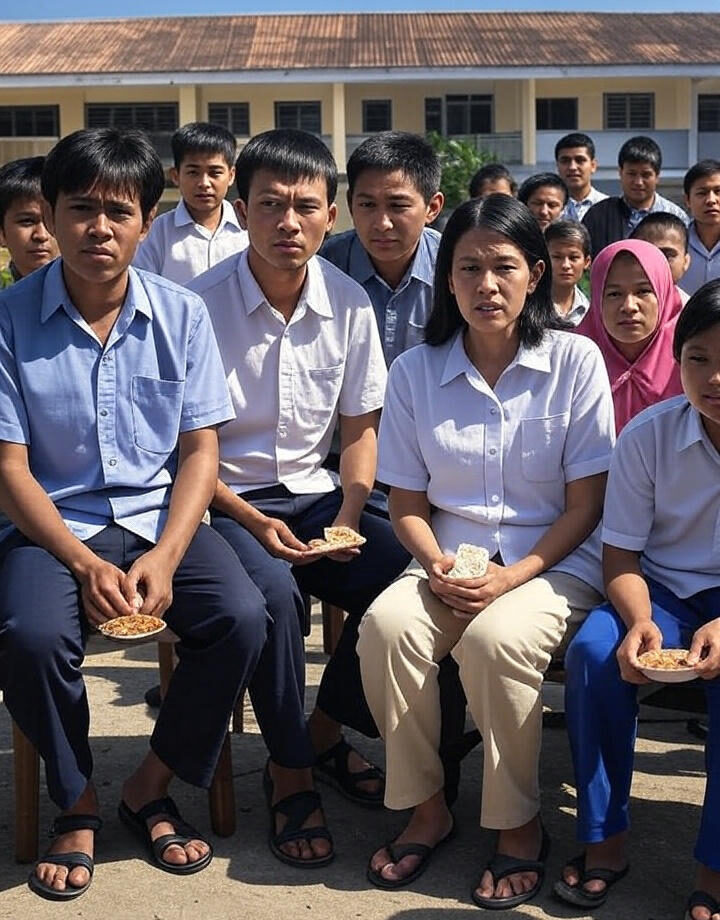Incident Overview
On August 14, 2025, in Sragen, Central Java, over 360 individuals including students and staff suffered food poisoning after consuming free school lunches provided under President Prabowo Subianto’s flagship nutrition program. This marks the most severe outbreak since the program launched in January (People.com, The Jakarta Post).
Meals Served & Symptoms
The contaminated meal, prepared in a central kitchen and distributed across several schools, included turmeric rice, omelette ribbons, fried tempeh, salad (cucumber and lettuce), sliced apple, and a box of milk. Many affected individuals reported symptoms such as diarrhea and headaches (People.com, The Jakarta Post).
Response Measures
Authorities have suspended food distribution from the implicated kitchen pending laboratory test results and have committed to covering all medical expenses related to this incident (People.com, Globedge).
Since the program’s initiation, over 1,000 people nationwide have reportedly fallen ill due to suspected food poisoning linked to free meal distributions (People.com, The Australian, The Jakarta Post).
Underlying Causes & Systemic Problems
A similar incident in May in West Java involved over 200 students, with lab results confirming Salmonella and E. coli contamination in meals (People.com, The Australian, Dawn).
Investigations attribute recurring poisoning cases to several critical flaws: contaminated raw ingredients, insufficient hygiene during preparation, and delays in food delivery that lead to bacterial growth (The Australian, Antara News, Malay Mail).
Program Scale & Policy Criticism
The Free Nutritious Meals (MBG) initiative, launched in January, aims to address child malnutrition and stunting by providing meals to 15 million people so far, with a target of reaching 83 million by year end. The projected annual budget stands at over 171 trillion rupiah (~$10.6 billion) (People.com, Reuters, AP News).
However, the program has faced criticism for budget overruns, shaky logistics, and recurring health scares. Protests from university students labeled the spending as misaligned, noting cuts in higher education funding in favor of the program (Financial Times, Malay Mail, Reuters).

Broader Implications
- Food Safety: The incidents underscore severe deficiencies in the program’s quality control, especially concerning hygiene, ingredient sourcing, and supply chains.
- Trust Erosion: Continued poisoning events have eroded public confidence in the initiative and raised alarm regarding government oversight and implementation.
- Operational Challenges: The rapid and large scale rollout, modeled after programs in other nations, lacked adequate pre-launch planning and safety protocols, leading to repeated lapses (BBC, Malay Mail, Financial Times).
Summary Table
| Aspect | Details |
|---|---|
| When & Where | August 14, 2025 Sragen, Central Java |
| Affected | Over 360 individuals fell ill |
| Foods Served | Turmeric rice, omelette, tempeh, salad, apple, milk |
| Symptoms | Diarrhea, headache |
| Actions Taken | Kitchen suspended pending tests; medical costs covered |
| Wider Issues | Over 1,000 cases reported since January |
| Causes | Contamination, poor hygiene, delivery delays |
| Program Goals | Feed millions, reduce malnutrition, expansive budget |
| Criticism | Repeated safety failures, budget strain, protests |
This episode highlights the critical need for rigorous food safety workflows, especially in programs of this magnitude that aim to feed millions of vulnerable children. The balance between scale and safety must always lean toward protecting public health.

